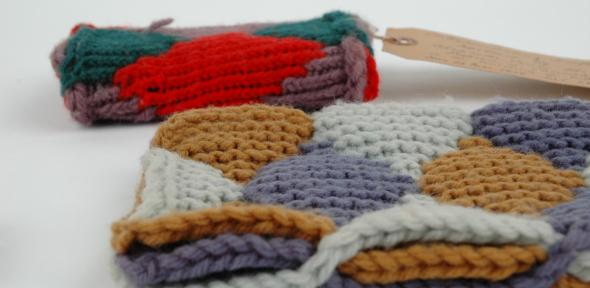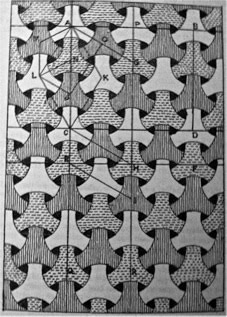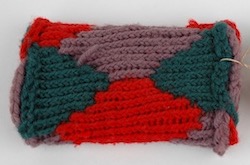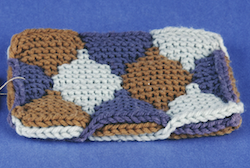These objects are two of the many (at least seventeen) models Crum Brown constructed following the discussion in his paper, 'On a Case of Interlacing Surfaces' (1). That paper explores the behaviour of perforated surfaces like those depicted in Image 3. Crum Brown refers directly to 'the models exhibited', indicating that he had some models with him when he presented the paper to the Royal Society of Edinburgh.

These knitted models (Image 1) illustrate the abstract mathematical surfaces that their creator, the Scottish chemist Alexander Crum Brown (1838-1922), describes in an 1885 paper for the Royal Society of Edinburgh.
A Theory to Tie Everything Together

Though these models accompany a mathematical paper, Crum Brown's reputation is undoubtedly as a chemist. He never wrote about his knitted surfaces in relation to chemistry, but he worked at a time when many scientists would have seen his study of surfaces as highly relevant to the physical sciences.
In 1867, the physicist William Thomson hypothesized that atoms might be tiny knotted tubes of a perfect fluid called 'ether'. He hoped this hypothesis would reconcile a seeming contradiction between fluid dynamics, which assumed matter to be continuous, and chemistry, which theorised discrete pieces of matter called atoms. Thomson intended to explain the existence of different atoms in terms of different knots; thus knot theory, the mathematical classification of knots, was born. Thomson's idea, known as the vortex-atom hypothesis, has long since been rejected, but knot theory remains a vibrant area of research today.
Crum Brown never wrote about the vortex-atom hypothesis himself, but he was close with its most enthusiastic supporters. We cannot know whether he shared his colleagues' optimism that the study of knots would illuminate the fundamental nature of matter. But in this context it is no stretch to see Crum Brown's study of interlacing surfaces as part of his scientific work. By knitting these strange, colourful objects, Crum Brown was exploring the ways surfaces can intertwine and - he might reasonably have hoped - the way atoms hold together.
References
- Alexander Crum Brown. 'On a Case of Interlacing Surfaces'. Proceedings of the Royal Society of Edinburgh volume 13 (1885-6), pp. 382-386.
David Dunning
David Dunning, 'Knitted Interpenetrating Surfaces', Explore Whipple Collections, Whipple Museum of the History of Science, University of Cambridge, 2014.



